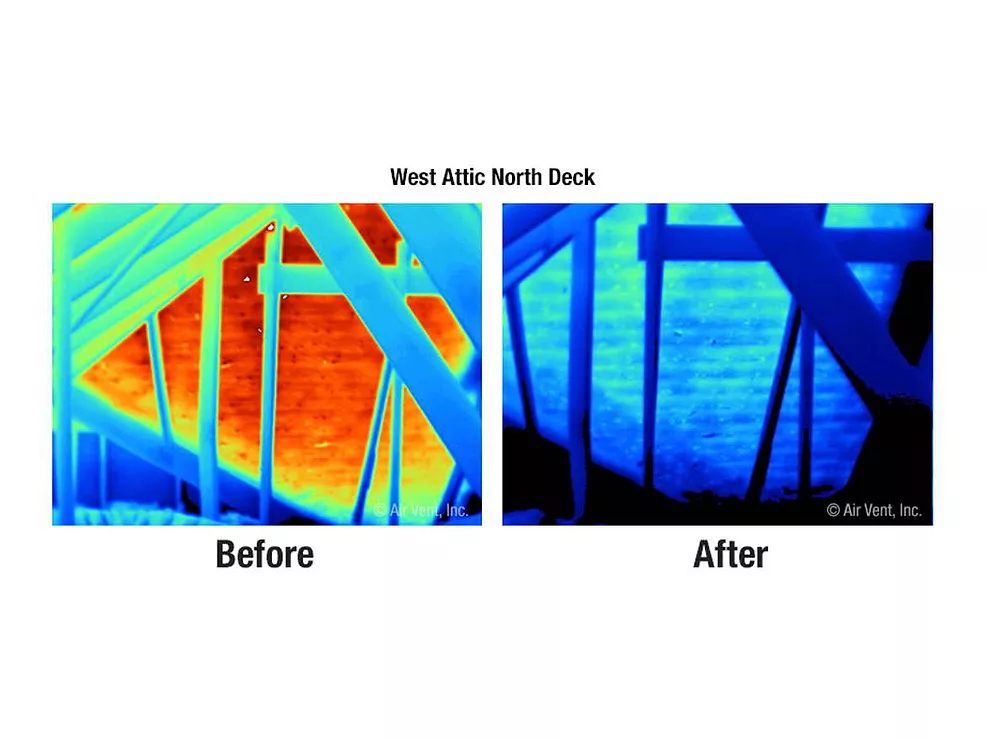Photovoltaic Cells
Just like roofing systems, solar solutions come in a variety of types, sizes, efficiencies and price points. Before investing in a rooftop solar system, it is important to understand the types of photovoltaic (PV) cells available and which technology might be best for a particular application.

Just like roofing systems, solar solutions come in a variety of types, sizes, efficiencies and price points. Before investing in a rooftop solar system, it is important to understand the types of photovoltaic (PV) cells available and which technology might be best for a particular application.
.jpg) Solar energy is generated by exposing PV cells
to light that is absorbed and converted into electricity. Built of razor-thin
layers of semiconducting material, every cell is a power generator. When light
falls on a PV module, the radiant energy is converted into direct current (DC),
which is then converted into household-compatible alternating current (AC) by
means of an inverter.
Solar energy is generated by exposing PV cells
to light that is absorbed and converted into electricity. Built of razor-thin
layers of semiconducting material, every cell is a power generator. When light
falls on a PV module, the radiant energy is converted into direct current (DC),
which is then converted into household-compatible alternating current (AC) by
means of an inverter.
The most commonly used PV cells are made from crystalline silicon and thin-film amorphous silicon. However, other technologies such as photochemical and concentrating photovoltaic are being developed.
Crystalline Silicon PV Cells
The majority of PV cells produced today use crystalline silicon (c-Si) as its light-absorbing semiconductor. The c-Si technology originally was developed for the semi-conductor industry to produce PV cells for integrated circuits and microchips. These PV cells have an energy conversion efficiency between 11 percent and 16 percent. The energy conversion efficiency of a solar cell is the percentage of sunlight converted by the cell into electricity. While the efficiency of c-Si is high, it absorbs light poorly and requires many layers to perform efficiently in solar applications.
The two types of crystalline silicon technology used to produce PV cells are mono- and multi-crystalline. Mono-crystalline technology uses thin wafers sliced from a single, pure crystal silicon ingot. With multi-crystalline or polycrystalline technology, silicon crystals are cast into a block and then sliced into wafers. Multi-crystalline silicon is not as pure as mono-crystalline and therefore produces lower-quality wafers. However, it is significantly less expensive.
 Thin-Film PV Cells
Thin-Film PV Cells
The high demand for c-SI has outstripped production causing the price of c-Si to rise. With the high cost of c-Si, a number of PV cell manufacturers have begun using less-expensive semiconductor materials including amorphous silicon (a-Si), cadmium telluride (CdTe), copper indium diselenide (CIS) or copper indium gallium selenide (CIGS). These materials are good light absorbers and are fairly thin.
They are known as thin-film because they are deposited in very thin layers on stainless steel, glass or a flexible substrate. The thickness of the film is less than 1 micron (a human hair is 50-100 microns). Like c-Si, thin-film PV cells are combined into modules and laminated to protect them from the elements. They are less expensive than c-Si, but only have a demonstrated efficiency of approximately 8 percent. The advantage of thin-film technology is that it can be applied over large areas, providing more opportunity to generate electricity in cloudy conditions.
The shortage of crystalline silicon has led to increases in the use of thin-film PV cells in the United States. Just a few years ago, they were virtually unheard of. Today, they make up approximately 30 percent of the market.
Photoelectrochemical PV Cells
Photoelectrochemical (PEC) PV cells are currently under development. Unlike other PV cells that use solid crystal layers to absorb light, PEC cells are liquid. They absorb light with a dye sensitizer and use it to create electrical current in a nanocrystalline titanium dioxide semiconductor layer. The cells are encased in a carbon layer on the back and are contained in glass on both sides. A number of companies are developing this technology and they could be introduced commercially in the near future. These cells are expected to compete by significantly reducing the cost of PV cells.
Concentrating Photovoltaics
Concentrating photovoltaic systems use lenses or mirrors to concentrate sunlight onto high-efficiency solar cells. These solar cells are typically more expensive than conventional cells used for flat-plate photovoltaic systems. However, the concentration of sunlight decreases the required cell area while also increasing the cell efficiency. This technology has potential for solar cell efficiencies greater than 40 percent.
The high cost of advanced, high-efficiency solar cells requires concentrated sunlight for the system to achieve a cost-effective comparison with other solar alternatives. Therefore tracking systems are usually installed to take advantage of every hour of available sunlight. Tracking system motors may require maintenance.
The chart in Figure 1 compares crystalline and thin-film technologies in both bituminous and single-ply applications.
 Selecting the Right Technology for the
Project
Selecting the Right Technology for the
Project
One of the most important considerations in selecting which solar technology to use is based on balancing the cost of the project with the energy it generates. That will vary based on project specifics such as its size and location. It is important to engage a knowledgeable manufacturer or solar integrator who can analyze your specific project and make recommendations based on the current technology available.
Whether a crystalline or thin-film system is selected, the steps to successfully installing a roof-top-mounted solar system are the same, but vary depending on membrane type and means of attachment. (See Figure 2.)
Other key considerations include:
If the roof is guaranteed, the manufacturer may have additional installation requirements. The space for the solar installation needs to be put in context with other rooftop equipment requirements, such as exhaust fans and communications equipment.
Solar systems are only as effective as the amount of light they receive to power them. Any obstruction that provides unwanted shade needs to be evaluated, as does the geographic area in which a building is located.
Before embarking on a solar project, it is important to work with a knowledgeable manufacturer or solar integrator who understands your roofing asset and works with you to develop solar solutions that help you reach your project goals. CR

Shown is an example of a crystalline silicon
rack-mounted system.
Just like roofing systems, solar solutions come in a variety of types, sizes, efficiencies and price points. Before investing in a rooftop solar system, it is important to understand the types of photovoltaic (PV) cells available and which technology might be best for a particular application.
.jpg)
Shown is an example of a thin-film rack mounted
solar collecting system.
The most commonly used PV cells are made from crystalline silicon and thin-film amorphous silicon. However, other technologies such as photochemical and concentrating photovoltaic are being developed.
Crystalline Silicon PV Cells
The majority of PV cells produced today use crystalline silicon (c-Si) as its light-absorbing semiconductor. The c-Si technology originally was developed for the semi-conductor industry to produce PV cells for integrated circuits and microchips. These PV cells have an energy conversion efficiency between 11 percent and 16 percent. The energy conversion efficiency of a solar cell is the percentage of sunlight converted by the cell into electricity. While the efficiency of c-Si is high, it absorbs light poorly and requires many layers to perform efficiently in solar applications.
The two types of crystalline silicon technology used to produce PV cells are mono- and multi-crystalline. Mono-crystalline technology uses thin wafers sliced from a single, pure crystal silicon ingot. With multi-crystalline or polycrystalline technology, silicon crystals are cast into a block and then sliced into wafers. Multi-crystalline silicon is not as pure as mono-crystalline and therefore produces lower-quality wafers. However, it is significantly less expensive.

Figure 1.
A comparison of crystalline and thin-film technologies in bituminous
applications, such as BUR (built-up roofs), SBS (styrene butadiene styrene) and
APP (atactic polypropylene), and single-ply applications, including PVC
(polyvinyl chloride), TPO (thermoplastic olefin) and EPDM (ethylene propylene
diene monomer).
The high demand for c-SI has outstripped production causing the price of c-Si to rise. With the high cost of c-Si, a number of PV cell manufacturers have begun using less-expensive semiconductor materials including amorphous silicon (a-Si), cadmium telluride (CdTe), copper indium diselenide (CIS) or copper indium gallium selenide (CIGS). These materials are good light absorbers and are fairly thin.
They are known as thin-film because they are deposited in very thin layers on stainless steel, glass or a flexible substrate. The thickness of the film is less than 1 micron (a human hair is 50-100 microns). Like c-Si, thin-film PV cells are combined into modules and laminated to protect them from the elements. They are less expensive than c-Si, but only have a demonstrated efficiency of approximately 8 percent. The advantage of thin-film technology is that it can be applied over large areas, providing more opportunity to generate electricity in cloudy conditions.
The shortage of crystalline silicon has led to increases in the use of thin-film PV cells in the United States. Just a few years ago, they were virtually unheard of. Today, they make up approximately 30 percent of the market.
Photoelectrochemical PV Cells
Photoelectrochemical (PEC) PV cells are currently under development. Unlike other PV cells that use solid crystal layers to absorb light, PEC cells are liquid. They absorb light with a dye sensitizer and use it to create electrical current in a nanocrystalline titanium dioxide semiconductor layer. The cells are encased in a carbon layer on the back and are contained in glass on both sides. A number of companies are developing this technology and they could be introduced commercially in the near future. These cells are expected to compete by significantly reducing the cost of PV cells.
Concentrating Photovoltaics
Concentrating photovoltaic systems use lenses or mirrors to concentrate sunlight onto high-efficiency solar cells. These solar cells are typically more expensive than conventional cells used for flat-plate photovoltaic systems. However, the concentration of sunlight decreases the required cell area while also increasing the cell efficiency. This technology has potential for solar cell efficiencies greater than 40 percent.
The high cost of advanced, high-efficiency solar cells requires concentrated sunlight for the system to achieve a cost-effective comparison with other solar alternatives. Therefore tracking systems are usually installed to take advantage of every hour of available sunlight. Tracking system motors may require maintenance.
The chart in Figure 1 compares crystalline and thin-film technologies in both bituminous and single-ply applications.

Figure 2. Key steps to successfully installing a
rooftop-mounted solar system in ballasted and mechanically attached systems.
One of the most important considerations in selecting which solar technology to use is based on balancing the cost of the project with the energy it generates. That will vary based on project specifics such as its size and location. It is important to engage a knowledgeable manufacturer or solar integrator who can analyze your specific project and make recommendations based on the current technology available.
Whether a crystalline or thin-film system is selected, the steps to successfully installing a roof-top-mounted solar system are the same, but vary depending on membrane type and means of attachment. (See Figure 2.)
Other key considerations include:
- Roof type.
- Roof age.
- Structural framing system.
- Manufacturer’s guarantee.
- Accessibility.
- Equipment.
- Geographical location.
If the roof is guaranteed, the manufacturer may have additional installation requirements. The space for the solar installation needs to be put in context with other rooftop equipment requirements, such as exhaust fans and communications equipment.
Solar systems are only as effective as the amount of light they receive to power them. Any obstruction that provides unwanted shade needs to be evaluated, as does the geographic area in which a building is located.
Before embarking on a solar project, it is important to work with a knowledgeable manufacturer or solar integrator who understands your roofing asset and works with you to develop solar solutions that help you reach your project goals. CR
Looking for a reprint of this article?
From high-res PDFs to custom plaques, order your copy today!



